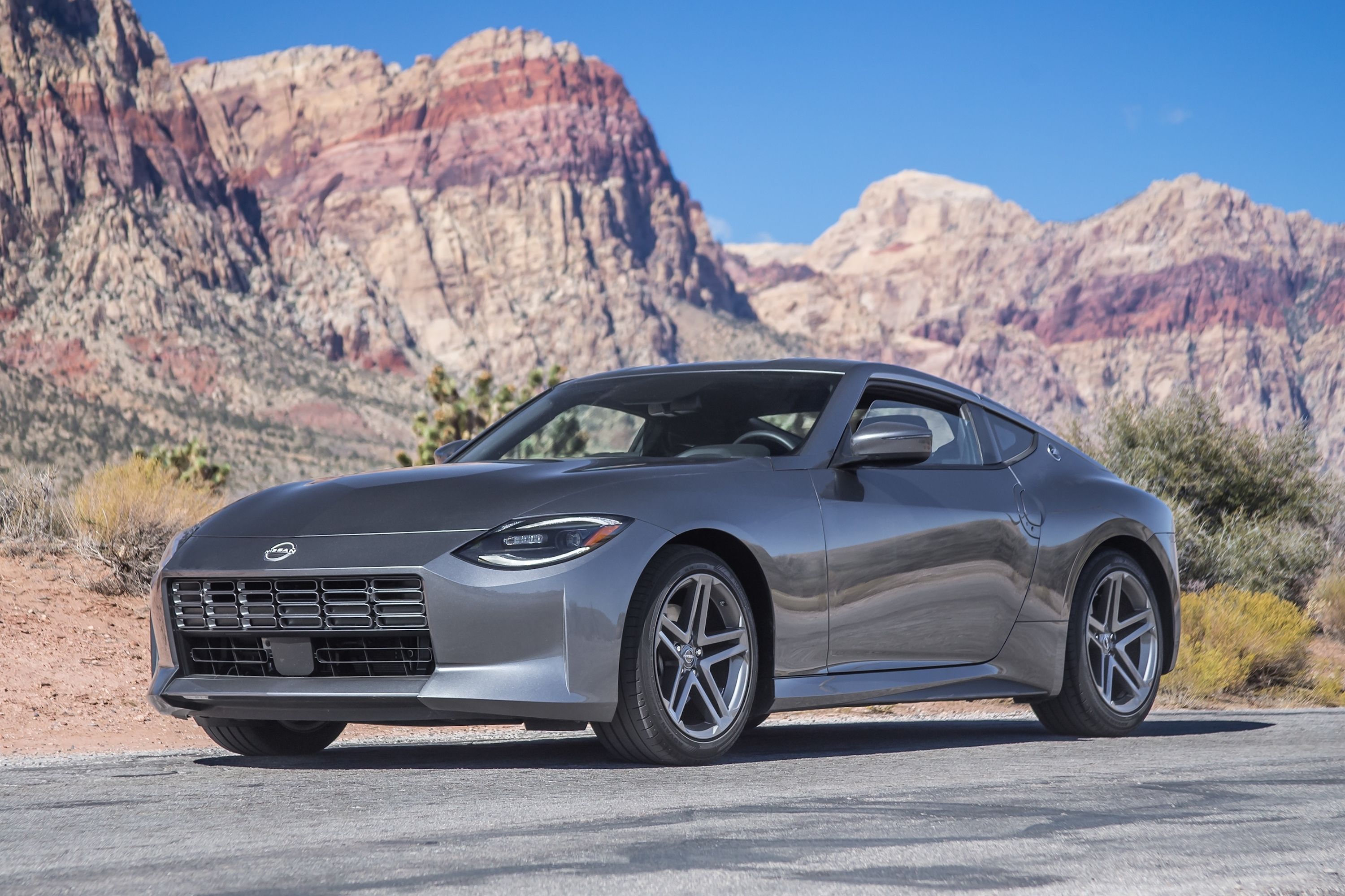
The Nissan Z is an awesome new offering from Japan, and it genuinely seems to have been built with the true enthusiast in mind. It's also set to be the new halo car for Nissan performance, at least until the next GT-R arrives, and in GT500 form, it looks mesmerizingly menacing. As much as its performance will play a big role in luring buyers in, a lot of credit has to be given to the design team for penning something as beautifully proportioned as this.
Besides its overall shape, the artists who created this car also deserve credit for seamlessly melding the old with the new. While its retro heritage is blatantly apparent in a few key areas, there are many other hidden details that give a nod to the past too. Grab a cup of coffee, sit back, and see how Nissan incorporated classy Easter eggs throughout.
Starting outside the car, the side profile gives lip service to the first-generation Z car. That long hood and short rear deck are the results of a classic recipe, and in conjunction with a sloping roofline that boasts a silver accent inspired by the shape of a katana blade, the overall shape is instantly attractive. It's not all artistic brushstrokes and designer expression either: the Golden Ratio, a mathematical expression seen in nature (a Nautilus shell, for example), is also referenced in "elements of the front and rear, window height, and door panel." This is styling and design working together for a cohesive and timeless masterpiece that will look good decades from now.
The rear-quarter glass was also carefully shaped. This draws inspiration directly from the first-generation Z and can be seen on the last Z car too, the 370Z. Moving to the hood, the "Z Bulge" is also a cue borrowed from the original Z. Further down, the grille's rectangular shape is another call to the early Z cars, as well as the more recent 350Z. That grille is further refined with elongated oval shapes that "pay homage to the Z32's taillamps." Speaking of lamps, the headlights are intended to reference the shape of the glass-covered headlamps of the 240ZG, or "G-nose" Z.
Moving rearward once again, the Z badge seen on the C-pillar references the first-generation S30 Z, both in stylization and positioning, while the rear blackout section and taillights are clearly inspired by those of the Z31 and Z32 300ZX models respectively. The upturned rear spoiler is again something to remind us of the first Z cars, but on the modern interpretation, the spoiler does not extend beyond the tailgate and gets a more contemporary and edgy look.
Not everything translates perfectly to a modern car, and another example of this is the design of the 18-inch wheel. This gets five spokes as opposed to the four seen on the wheel that inspired it, but this connection is still made apparent by the bolt holes being placed within the wheel's negative space. The 19-inch wheels, on the other hand, are inspired by a katana blade, just like that silver roof accent.
The design elements that we've covered thus far are relatively easy to spot, but some things require a closer look. At the bottom of the rear window glass, an etched message that reads, "Since 1969-" tells us when the first Z car was launched and indicates that the story of the Z car is far from over. Another hidden Easter egg is the Z logo on the side of the available nine-speed automatic's transmission case. Finally, the car's yellow color, called Ikazuchi Yellow, is a tip of the hat to the "father of the Datsun Z," Yukata Katayama, who chose the original car's yellow to contrast against blue skies. These details are all great for onlookers, but what of the interior where you, the driver, will spend most of your time?
The general layout of the dashboard was "inspired by the simple, yet functional, horizontal design that characterized the original Z's dash." As such, the center console is well defined and boasts a triple gauge cluster. This was a hallmark of many past Z cars but it has a practical purpose too, namely that of reducing eye movement fatigue and distractions while driving. Below this sit air vents that are angled in the opposite direction to the bottom portion of the dash, featuring what designers call a "reverse slant" that was also used in the first Z. And if you think this car is overloaded with retro styling, take a look at the tach, which boasts shift lights and a 12 o'clock redline position for ideal driving performance.
All of these details are beautifully integrated and are intended to help buyers form a lasting connection with their Z cars as they fall further in love with the design. Mission accomplished? We think so.
